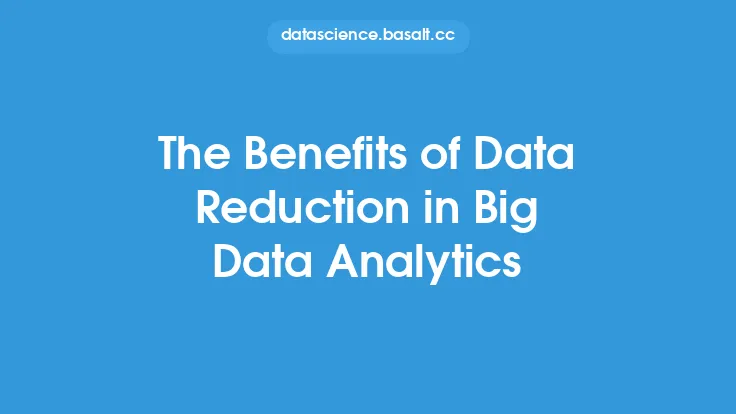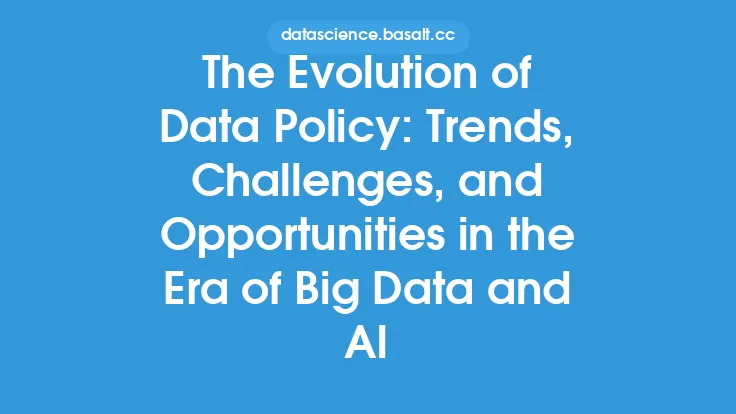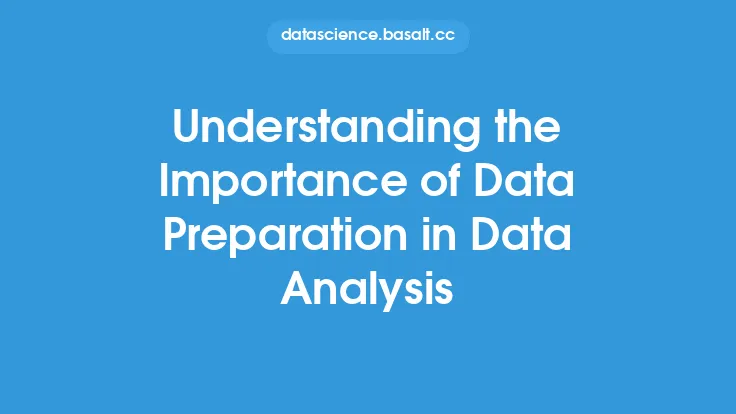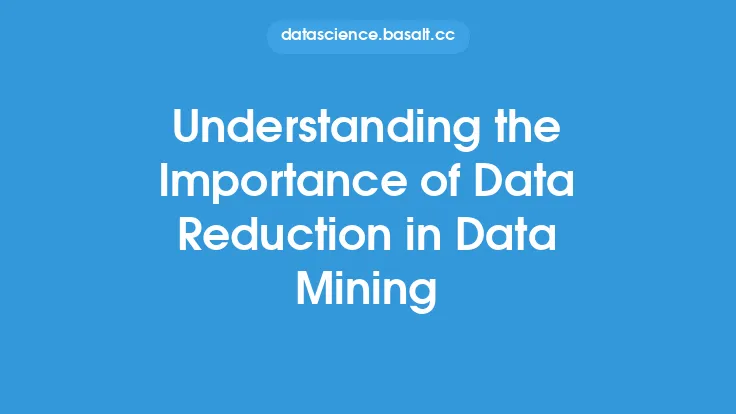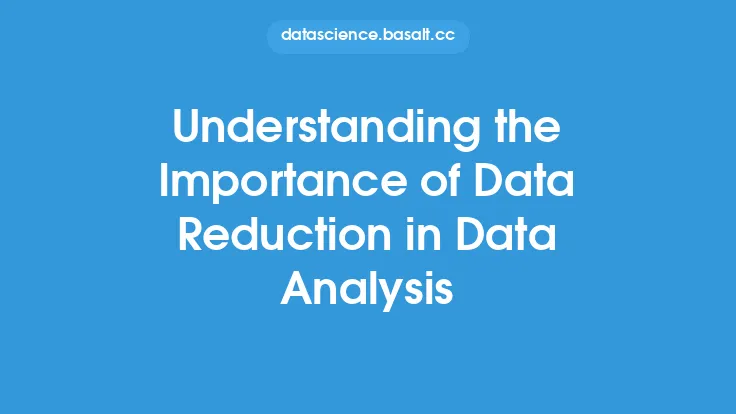The sheer volume of data being generated today is unprecedented, and it's growing exponentially. This phenomenon, known as big data, has led to a significant challenge in extracting valuable insights from the vast amounts of information available. One of the key strategies to overcome this challenge is data reduction, a process that involves reducing the size of the dataset while preserving its integrity and usefulness. In this article, we'll delve into the benefits of data reduction in big data analytics, exploring its importance, techniques, and applications.
Introduction to Data Reduction
Data reduction is a crucial step in the data analysis process, as it enables organizations to extract meaningful insights from large datasets. By reducing the size of the dataset, data reduction helps to improve the efficiency and effectiveness of data analysis, leading to better decision-making. There are several techniques used in data reduction, including data aggregation, data sampling, and data transformation. Each technique has its own strengths and weaknesses, and the choice of technique depends on the specific use case and the characteristics of the data.
Benefits of Data Reduction
The benefits of data reduction are numerous and significant. Firstly, data reduction helps to improve the performance of data analysis algorithms. By reducing the size of the dataset, data reduction enables algorithms to process the data more quickly and efficiently, leading to faster insights and better decision-making. Secondly, data reduction helps to reduce the cost of data storage and processing. Large datasets require significant storage and processing resources, which can be costly. By reducing the size of the dataset, organizations can reduce their storage and processing costs, leading to significant cost savings. Thirdly, data reduction helps to improve the accuracy of data analysis. By removing redundant and irrelevant data, data reduction enables organizations to focus on the most important and relevant data, leading to more accurate insights and better decision-making.
Data Reduction Techniques
There are several data reduction techniques used in big data analytics, each with its own strengths and weaknesses. Data aggregation involves combining multiple data points into a single data point, such as calculating the average or sum of a set of values. Data sampling involves selecting a subset of data points from a larger dataset, such as selecting a random sample of customers from a larger customer database. Data transformation involves converting data from one format to another, such as converting categorical data into numerical data. Other techniques include data normalization, data feature selection, and data dimensionality reduction. Each technique has its own application and use case, and the choice of technique depends on the specific requirements of the project.
Applications of Data Reduction
Data reduction has a wide range of applications in big data analytics, including customer segmentation, predictive modeling, and data visualization. In customer segmentation, data reduction is used to identify patterns and trends in customer behavior, enabling organizations to target specific customer segments with tailored marketing campaigns. In predictive modeling, data reduction is used to build more accurate models of customer behavior, enabling organizations to predict customer churn and retention. In data visualization, data reduction is used to create interactive and dynamic visualizations of complex data, enabling organizations to explore and understand their data more effectively.
Challenges and Limitations of Data Reduction
While data reduction offers many benefits, it also has several challenges and limitations. One of the main challenges is ensuring that the reduced dataset is representative of the original dataset. If the reduced dataset is not representative, it can lead to biased insights and poor decision-making. Another challenge is selecting the right data reduction technique for the specific use case. Different techniques have different strengths and weaknesses, and the choice of technique depends on the specific requirements of the project. Additionally, data reduction can be computationally intensive, requiring significant processing resources and expertise.
Best Practices for Data Reduction
To get the most out of data reduction, organizations should follow several best practices. Firstly, they should clearly define the goals and objectives of the data reduction project, ensuring that the reduced dataset meets the specific requirements of the project. Secondly, they should select the right data reduction technique for the specific use case, taking into account the characteristics of the data and the requirements of the project. Thirdly, they should ensure that the reduced dataset is representative of the original dataset, using techniques such as data validation and data quality checks. Finally, they should continuously monitor and evaluate the effectiveness of the data reduction technique, making adjustments as needed to ensure that the reduced dataset meets the specific requirements of the project.
Future of Data Reduction
The future of data reduction is exciting and rapidly evolving. With the increasing volume and complexity of big data, data reduction is becoming more important than ever. New techniques and technologies, such as artificial intelligence and machine learning, are being developed to improve the efficiency and effectiveness of data reduction. Additionally, the increasing use of cloud computing and big data platforms is enabling organizations to process and analyze large datasets more quickly and efficiently, making data reduction more accessible and affordable. As the field of big data analytics continues to evolve, data reduction will play an increasingly important role in extracting valuable insights from large datasets.
Conclusion
In conclusion, data reduction is a crucial step in the data analysis process, enabling organizations to extract meaningful insights from large datasets. The benefits of data reduction are numerous and significant, including improved performance, reduced costs, and improved accuracy. By selecting the right data reduction technique and following best practices, organizations can ensure that their reduced dataset is representative of the original dataset and meets the specific requirements of the project. As the field of big data analytics continues to evolve, data reduction will play an increasingly important role in extracting valuable insights from large datasets, enabling organizations to make better decisions and drive business success.
